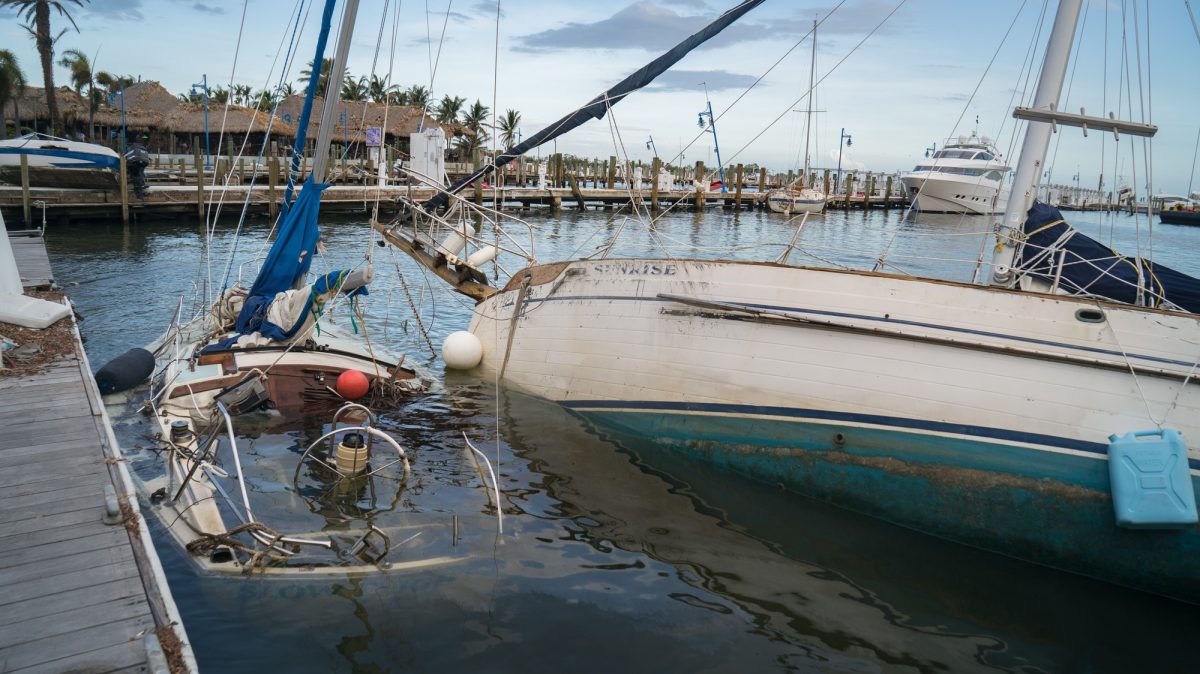
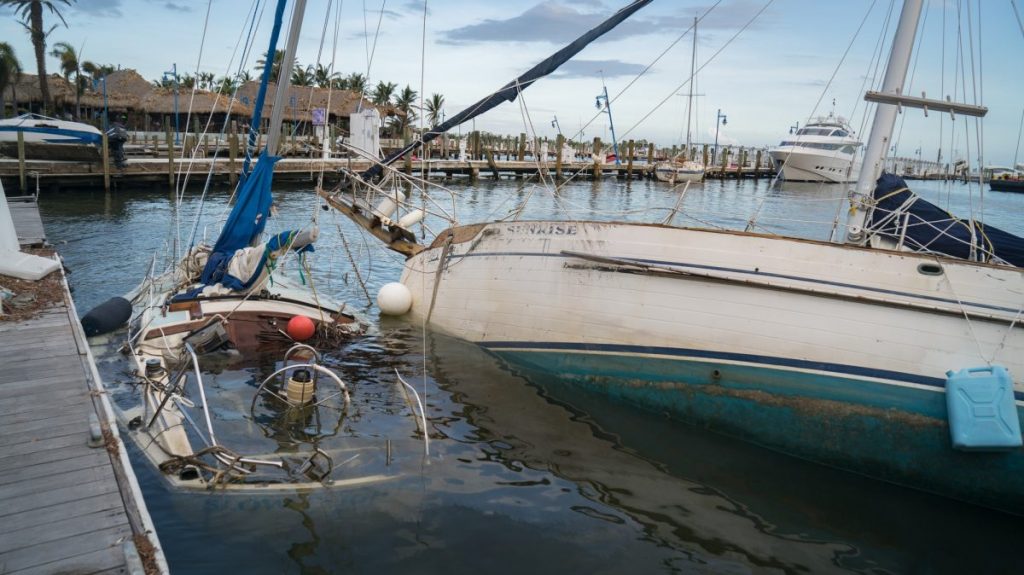
Hurricane Irma was the largest storm in recent memory for many Floridians. For the University of Miami, it brought many firsts: first mandatory evacuation of campus, first relocation of residential students into shelters, first cancellation of classes for almost three weeks. For students, it brought countless new experiences, such as preparing for a catastrophic Category 4 storm and deciding whether to evacuate and face the traffic or stay in place and hope for the best.
Early on, Hurricane Irma was declared a monster. Images compared its size to Andrew – the last major hurricane to hit Florida – and government officials and news media urged the public to stock up and strap down for a disastrous event. The projected path of the storm barreled directly through the east coast of Florida, hitting Miami with 180 mph winds, but the storm turned and brushed the west coast of the state instead. Hurricane Irma spared the east coast from the brunt of the storm but devastated Caribbean islands and the Florida Keys.
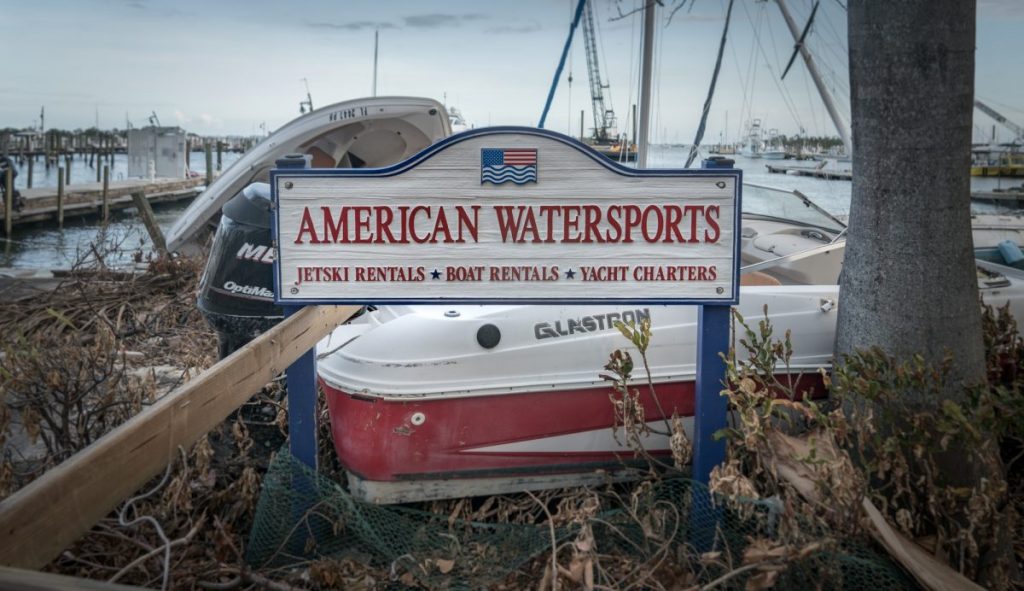
As frequent news reports piled up and friends evacuated, locals descended upon grocery store shelves of water and nonperishable food items, drained gas stations and stood in lines for hours to buy plywood to cover up windows and doors. The University of Miami, having learned from the backlash and commotion during Hurricane Matthew in 2016, called off classes Sept. 5, four days before South Florida was expected to feel the effects of Irma.
Even with advance notice of class cancellations, students sat on their laptops for hours trying to find affordable flights out of Florida, debating the dangers of staying and coming up with plans B, C and D. Flight prices skyrocketed within hours of the cancellation announcements, and, with the mass exodus of South Floridians, northbound traffic screeched to a halt.
Some students suffered through hours of layovers at multiple airports; others bore the cost of flying home full-price and coughed up hundreds, if not thousands, of dollars for safety; and the less than 150 students who remained on campus – many of them international students – were told they would be moved to an off-campus university shelter.
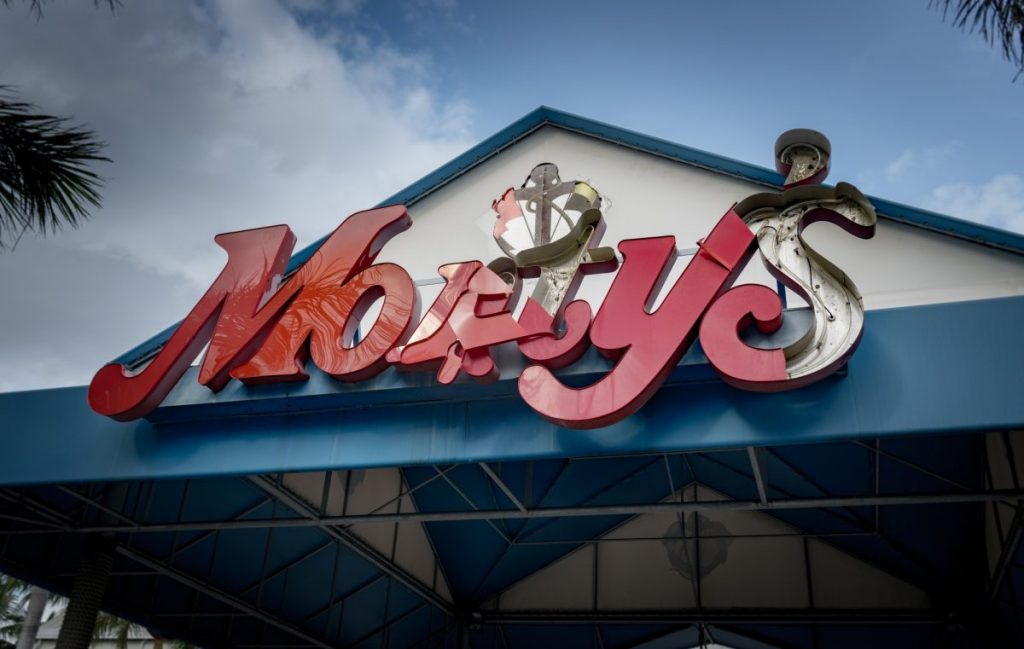
By Sept. 8, the only people on the university campus were emergency personnel who volunteered to serve during the storm, some groundskeepers finishing up preparations and administrators who moved into the campus Emergency Operations Center (EOC) and hunkered down. In total, this group of deans, communications experts, top university officials and emergency management crew worked for 10 days out of the EOC, spending four days in the center without going home.
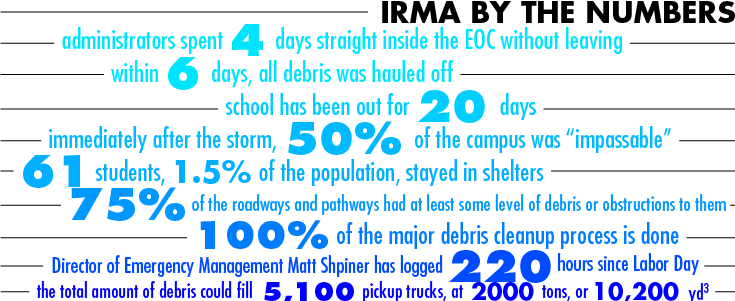
From that control center, the team orchestrated Emergency Notification Network (ENN) alerts to be sent out to the UM community, watched the progress of the storm and made tough calls about what timeline the university would operate on before, during and after the emergency.
Those in the EOC were the same people who first stepped on a debris-covered campus once the storm passed, documenting the damage and planning the removal of hundreds of thousands of pounds of fallen trees, leaves and branches from campus. Matt Shpiner, the director of the Office of Emergency Management who oversaw the entire operation, said he logged at least 220 hours since Labor Day.
Once Hurricane Irma was over and all that remained were downed power lines, spotty cell signal and darkened streets littered with trees, UM administration considered the next most pressing question: What would this mean for fall semester?
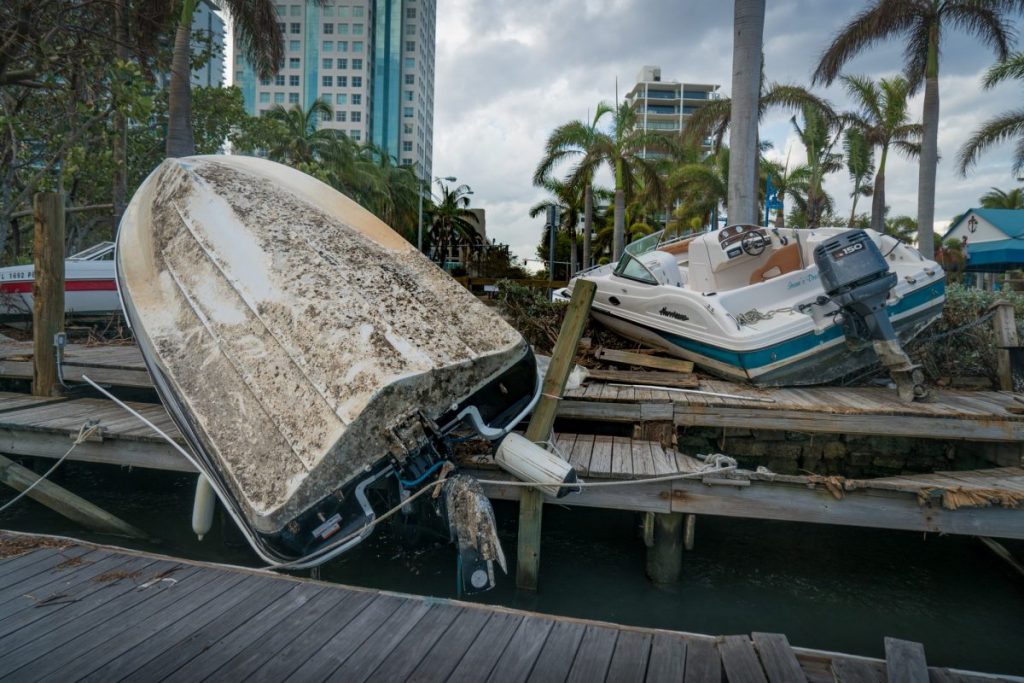
The revised academic calendar, which was met with a mixed bag of responses ranging from relief to anger, introduced an extension of the semester until Dec. 20 and the elimination of Family Weekend, Fall Break and finals week. Instead, students will take exams during regular class time and professors will revise syllabi at their own discretion. All classes would resume Sept. 25, according to the university plan.
For students directly impacted by the natural disasters, the university is offering additional financial aid to offset costs incurred and ensure financial stability.
While South Florida avoided devastation, the storm annihilated Caribbean nations such as Barbuda, where 90 percent of the island was destroyed, according to Prime Minister Gaston Browne. In Irma’s wake, two more dangerous storms, hurricanes Jose and Maria, struck some of the same areas.
Puerto Ricans were left without a way to let family know they were safe. Mexico was rocked by two powerful earthquakes in two weeks. The University of Miami was saved from severe damage, but the community did not escape the storm unscathed, emerging worried and saddened for family members, friends and victims in severely damaged nations.
In the Miami community, about 150 students volunteered their time Sept. 22 to help clean up and rebuild after Irma. Eight buses full of Canes arrived at sites throughout Miami-Dade to clean up debris and organize donations.
Several University of Miami students and departments began fundraising in response to the back-to-back catastrophes in recent weeks. Donations of nonperishable foods, baby products, toiletries, household supplies and new undergarments can be dropped off at donation locations in Richter Library, the Wellness Center, Gables One Tower, the Lennar Foundation Medical Center, the Shalala Student Center or any of the residential colleges.
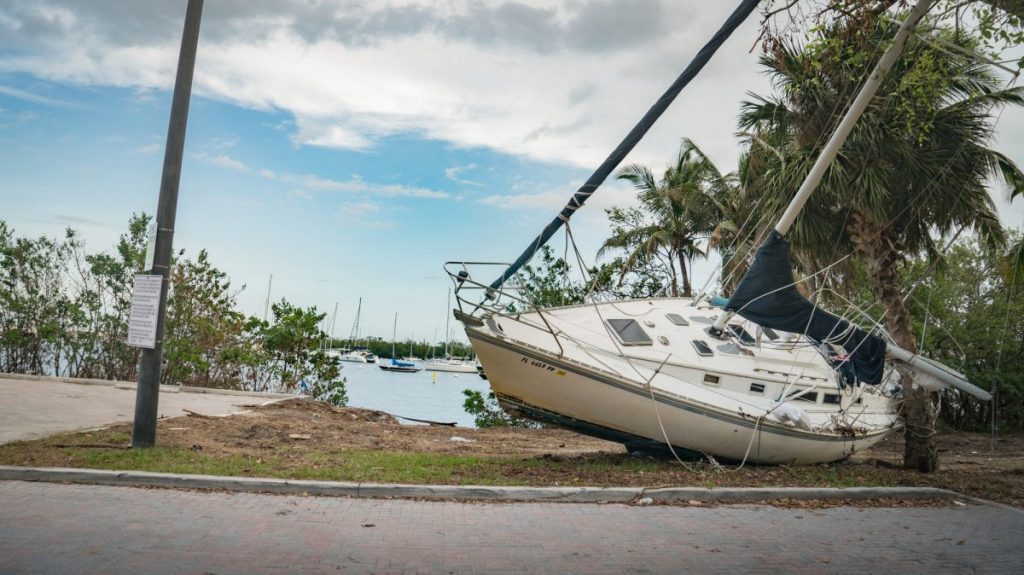
To read more of The Miami Hurricane’s continuous coverage in the aftermath of Hurricane Irma, visit www.themiamihurricane.com






